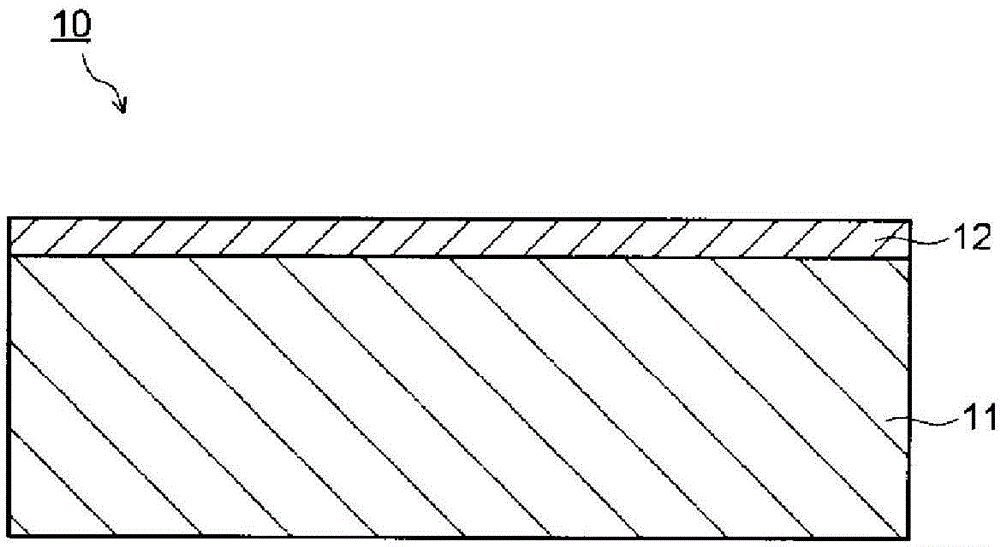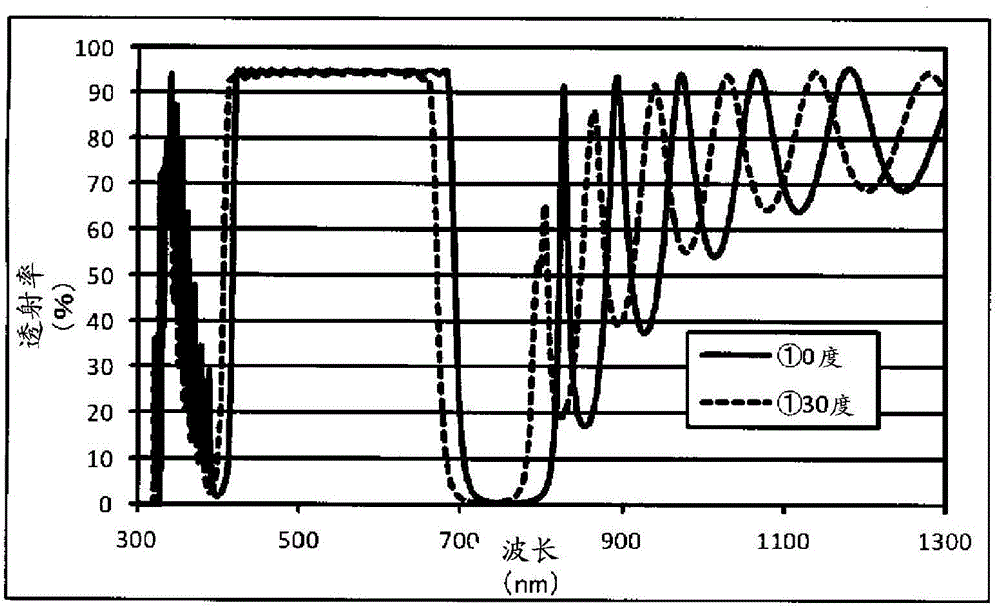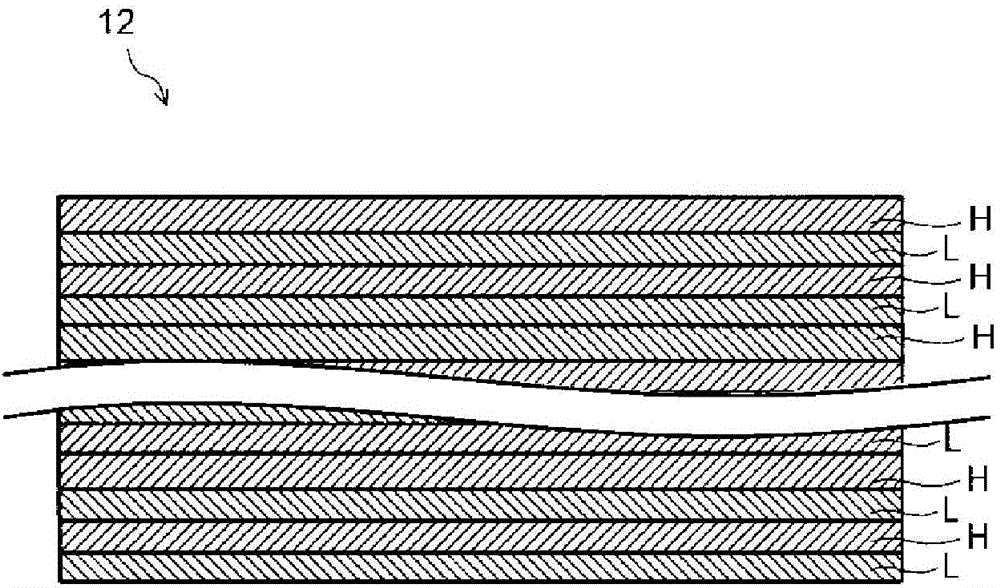Near-infrared cutoff filter
A cut-off filter, near-infrared technology, applied in instruments, optical components, optics, etc., to achieve the effect of incident angle-dependent suppression
- Summary
- Abstract
- Description
- Claims
- Application Information
AI Technical Summary
Problems solved by technology
Method used
Image
Examples
Embodiment approach
[0044] Hereinafter, the near-infrared cut filter of the present invention will be described with reference to the drawings.
[0045] figure 1 It is a cross-sectional configuration diagram of a near-infrared cut filter 10 (hereinafter, IRCF 10) according to the embodiment. Such as figure 1 As shown, the IRCF 10 includes a transparent substrate 11 and an optical multilayer film 12 provided on at least one main surface of the transparent substrate 11. It should be noted that the optical multilayer film 12 may be provided on one main surface of the transparent substrate 11 or may be separately provided on each main surface of the transparent substrate 11.
[0046] (Transparent substrate 11)
[0047] The material of the transparent substrate 11 is not particularly limited as long as it can transmit at least light in the visible wavelength region. Examples of materials for the transparent substrate 11 include crystals such as glass, crystal, lithium niobate, and sapphire, and poly(ethyle...
Embodiment 1~4
[0149] First, Examples 1 to 4 will be described. In Examples 1 to 4, titanium oxide (TiO 2 ) As the material of the high refractive index film, silicon oxide (SiO 2 ) As a material for low refractive index films. It should be noted that titanium oxide (TiO 2 ) The refractive index at a wavelength of 500nm is 2.47, making silicon oxide (SiO 2 ) The refractive index at a wavelength of 500nm is 1.48, which simulates the spectral characteristics. Below, the film conditions of Examples 1 to 4 are shown in Tables 1 to 4, and the simulation results of Examples 1 to 4 are shown in Figure 6-9 . In addition, the "film thickness" in Tables 1 to 4 is the physical film thickness. In addition, the "value of the coefficient" is a coefficient indicating that the physical film thickness is several times the QWOT.
Embodiment 1
[0151] [Table 1]
[0152] Number of layers
Membrane material
Film thickness d[nm]
The value of the coefficient
Number of layers
Membrane material
Film thickness d[nm]
The value of the coefficient
1
TiO 2
106.18
2.0981168
28
SiO 2
46.10
0.5458240
2
SiO 2
83.64
0.9902976
29
TiO 2
100.77
1.9912152
3
TiO 2
12.68
0.2505568
30
SiO 2
27.77
0.3287968
4
SiO 2
41.87
0.4957408
31
TiO 2
15.92
0.3145792
5
TiO 2
77.08
1.5231008
32
SiO 2
43.47
0.5146848
6
SiO 2
42.00
0.4972800
33
TiO 2
100.99
1.9955624
7
TiO 2
22.14
0.4374864
34
SiO 2
31.26
0.3701184
8
SiO 2
43.76
0.5181184
35
TiO 2
15.13
0.2989688
9
TiO 2
79.74
1.5756624
36
SiO 2
41.80
0.4949120
10
SiO 2
33.03
0.3910752
37
TiO 2
100.29
1.9817304
11
TiO 2
24.18
0.4777968
38
SiO 2
32.90
0.3895360
12
SiO 2
45.71
0.5412064
39
TiO 2
14.89
0.2942264
13
TiO 2
83.08
1.6416608
40
SiO 2
41.68
0.4934912
14
SiO 2
27.51
0.3257184
41
TiO 2
100.98
1.9953648
15
TiO 2
24.45
0.4831320
42
SiO 2
34.72
0.411084...
PUM
 Login to View More
Login to View More Abstract
Description
Claims
Application Information
 Login to View More
Login to View More - R&D Engineer
- R&D Manager
- IP Professional
- Industry Leading Data Capabilities
- Powerful AI technology
- Patent DNA Extraction
Browse by: Latest US Patents, China's latest patents, Technical Efficacy Thesaurus, Application Domain, Technology Topic, Popular Technical Reports.
© 2024 PatSnap. All rights reserved.Legal|Privacy policy|Modern Slavery Act Transparency Statement|Sitemap|About US| Contact US: help@patsnap.com










